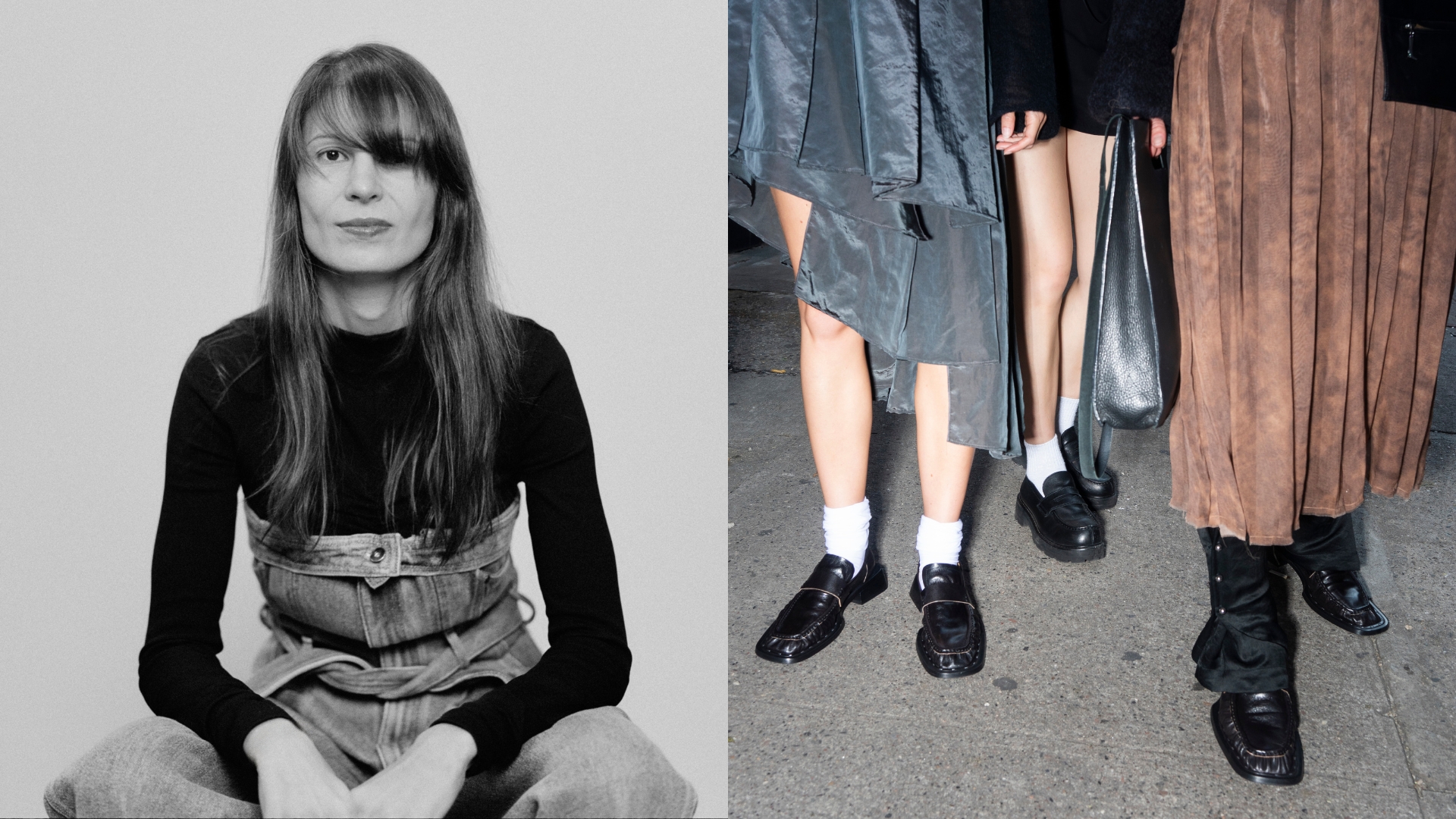
In a world of copy-pasted high streets punctuated by identical stores, independently-owned businesses stand out for their inimitable contributions to the communities they serve. Setting Up Shop is the Livingetc column that takes you inside the lives and professional ventures of shopkeepers who went the extra mile to run the stores of their dreams.
When MIISTA organizes a sample sale at its Bethnal Green showroom in East London, you can rest assured that, whatever the time of the year and weather conditions, a spirited line of brand devotees will patiently form from every angle of the city as early as an hour before the actual opening. Why? The answer is simple: having built her self-funded, independent label with community at its heart, beyond crafting artisanal footwear and ready-to-wear endorsed by style icons like Bella Hadid, Kendall Jenner, and Maria Bernad, Spanish-born founder Laura Villasenin has, first and foremost, created a platform for people to come together. And that's what MIISTA stans love doing on any day of the week, whether to indulge in one of the house-organized, female-led DJ sets or browse its latest collection and too-good-to-go outlet offerings.
"The saying 'we are the sum of our parts' rings true at MIISTA," the UAL graduate designer tells me. "We don't refer to our followers as 'our audience' because communication is never just one-way. Our community breathes life into the brand — without them, our designs would be just designs." With a team dedicated to fostering connections built around the label, the growing fashion sensation and the people behind it are "always one email or DM away," and eternally ready to give back to those who have made MIISTA's rise possible since its inception in 2011. The interactions between the brand and its supporters vary daily. "It could be seeing familiar faces at a sample sale in a city we've never visited before, or a last-minute call to help with a creative campaign," explains Villasenin.

Recently, MIISTA's people-first spirit saw ten of its loyal community members join the founder and her team in a 'Rage Room' shoot staged within their then half-finished — and now open — New York store on Orchard Street. "Connectivity to the cities we're in is essential to MIISTA, and in setting up shop in NYC, we couldn't ignore the uneasy feeling in the air, or the conversations we were having with our US friends, especially New Yorkers," she says. Addressing global concerns around local politics, its role in the unfolding climate and economic crises, and involvement in ongoing conflicts, Villasenin explains that there's a lot of collective anger. To process it, the team decided to build a set that "looked like the most depressing office block in the world” in their under-construction flagship, using discarded supplies retrieved from the city streets, and invite people in “to smash it all up".
"People were surprised, but those who know us well understand we've never shied away from these topics," Villasenin says of the mixed response to the initiative, inspired by exchanges with former Head of Content Oriana Kubsinska. While MIISTA may appear bigger now, "we're still a small team of individuals with opinions and feelings, and though we can't run for office, we can create a space to have meaningful conversations, both online and offline." The inauguration of the first New York store heralded a new chapter for the brand, but London, where the house was born, continues to influence Villasenin's vision. "London is central to our AW24 and SS25 collections," she says of the lines, informed by the 70s and 80s' underground scene and their punk, DIY ethos. "It taught me not to be scared, and that experimentation is good," adds the designer. Here, "you'll see piercings and tartan, but we've also explored what this mindset truly represents, collaborating with creatives, musicians, and artists who embody this alternative thinking."
Below, the MIISTA founder takes stock of her first 13 years of activity, elaborating on the artisanal approach that drives the label, inherited from her Galician roots, and how valuing people over profit has paid off in the long run.
"Very few people know that Galicia is home to a rich history of fashion production dating back to artisans of the early 1900s. It was common for women to make clothes to earn extra money to support their families — usually, their husbands were fishermen, working all night off the Atlantic Coast. As a small girl, I still remember my grandmother's looms. She would make all the home bedding, and I kept quite a few pieces. When I moved from my hometown, Coruña, to London to study, I was unsure about what I was getting into. I knew it had to be something creative, but my interests were too varied. I went to a few opening days. Still, it was only upon visiting Cordwainers — the footwear and handbags school part of the University of the Arts London — that I realized I had fallen in love. Walking around the workshops, the smell of craft, and the possibilities of experimentation captivated me. I was accepted into the course and spent the following four years learning the technical and theoretical ins and outs of product design for the fashion industry."
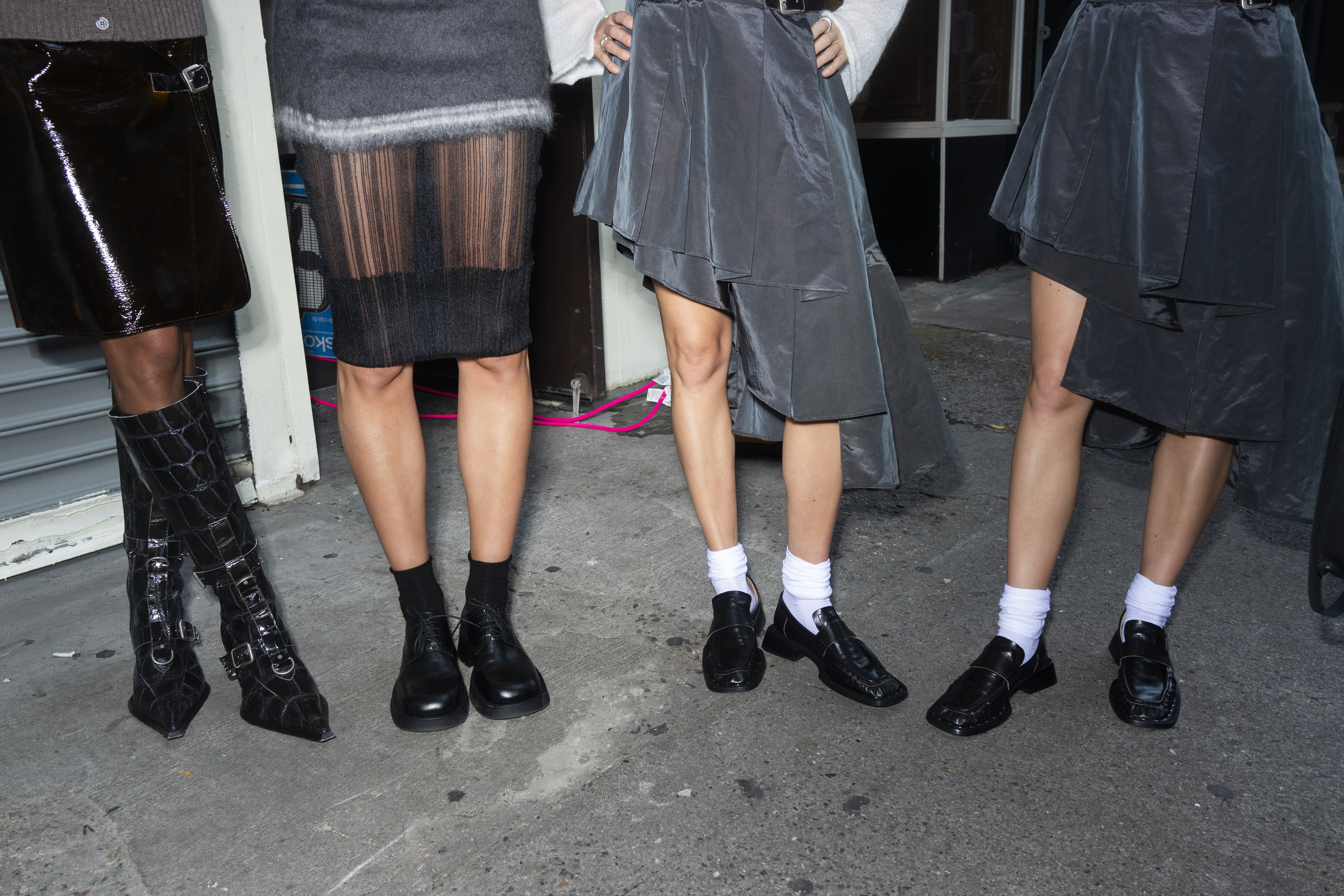
"My final project at university focused on sustainability and short supply chain. I really enjoyed that time. For the first three years after graduating, I worked in the industry, getting experience as a commercial designer and developing an understanding of global manufacturing. Of course, as a young designer in her twenties, I thought I knew much more than I did. Full of energy, I felt ready to launch my label. From the beginning, the goal was to own a fashion supply chain conceived through a female lens. I started MIISTA focusing on footwear exclusively in 2011. It was the category I knew best, both technically and commercially. When the brand turned ten in 2021, we dropped our inaugural ready-to-wear collection, entirely made of handmade pieces.
"We invested everything we had saved over the years in our factory in my Galician hometown, and recruited artisans who had dedicated their working lives to this craft. Reality hit us when we realized the shortage of new generations willing to train and learn the trade. MIISTA was, and remains, a project born of a desire to create a space and environment capable of keeping this tradition alive. It's not just about the quality of the product we're putting on the shop floor, but about the people who believe this could start changing things in the region. It's still very scalable, and with only seven collections launched, we're embarking on a journey to grow both the production team and the facilities."
"Studying at Cordwainers, all the workshops we had were in East London, specifically in Old Street and Hackney Central. Back in the day, the East End used to be full of shoe-making workshops and leather tanneries. In the 2000s, when I was a student, part of that infrastructure was still there — we would buy all our shoemaking and leather tools in a shop around Tottenham, and our technical tutors came from the fast-disappearing industry of that area. Nothing of it is left now. During those years, I got to know the district very well and learned to love it. It was a raw, buzzing neighborhood at the time, and was affordable to live in as a young art student, which, unfortunately, isn't the case today. We still keep a small MIISTA digital creative studio in East London, but I relocated much further West to live. When you need more green space around your house, East London becomes unaffordable.
"Footwear is made between two manufacturers in Portugal and southern Spain, ready-to-wear is made in northern Spain, and our warehouse is in Porto. It's easy for us to travel between them by car, and we aim to keep it that way. Our entire operational team used to be in London, working out of a former tannery that had been converted into a beautiful large studio. When Brexit came with the resulting trade complications, we made the tough decision to pack up the larger studio and move to our factory in the north of Spain. Now, only our marketing team remains in London, based next door in a much smaller space from where they keep their ears to the ground in the city. Post-Brexit was a big challenge, but we are in a much better position now."
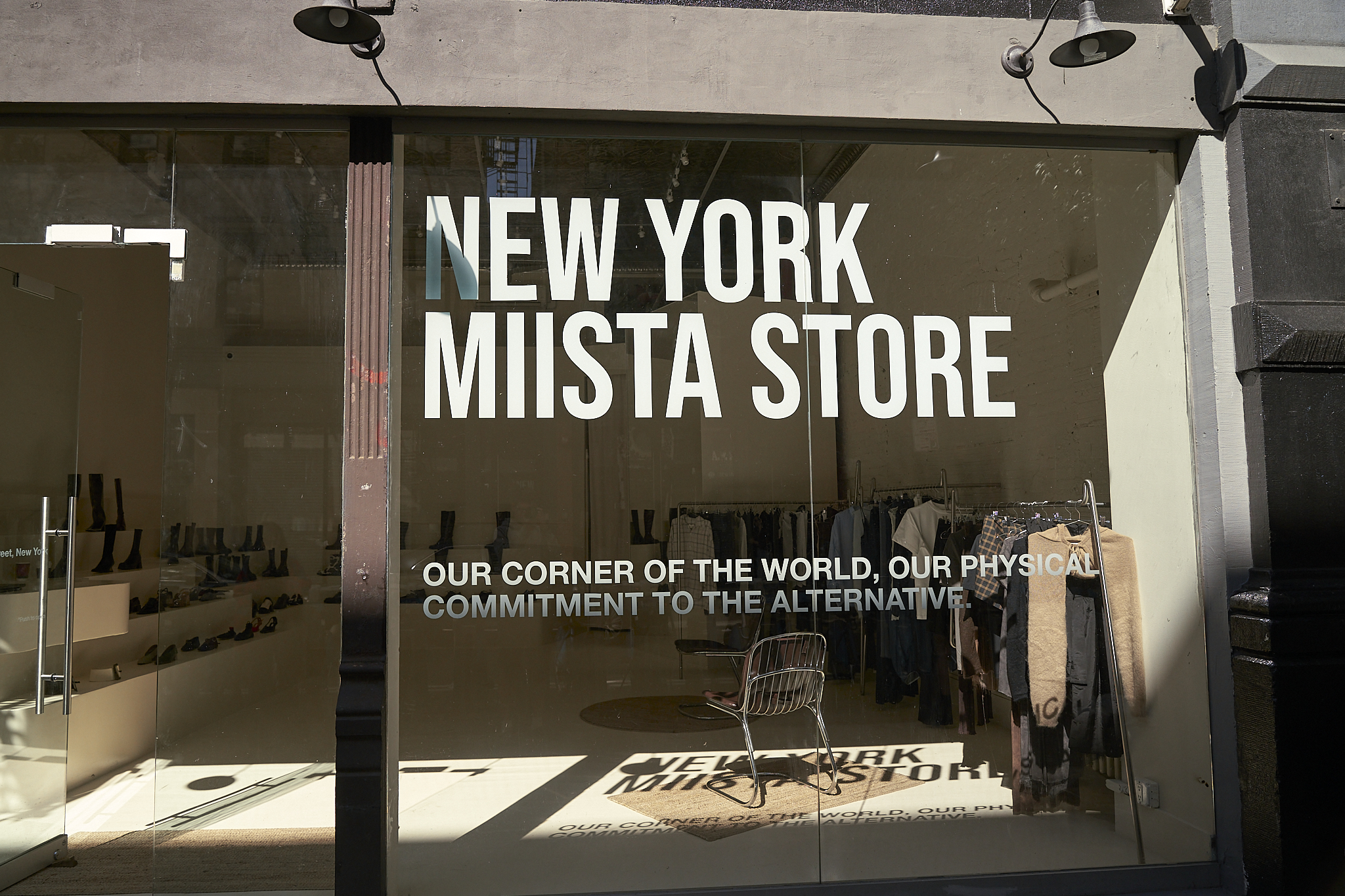
"We've always had a close relationship with New York, returning for a temporary store in 2019 and sample sales ever since. As an independent brand, the move was incredibly difficult, but we finally felt we had the resources to do it this year. Interestingly, Orchard Street wasn't our first location. We had everything ready to go somewhere else in Soho, but a hiccup forced us to change direction. Despite the delays, Orchard Street feels meant to be. We are glad we didn't end up in Soho — our brand persona is more Lower East Side. The street is vibrant, with galleries, amazing stores, great eateries, and customers who have been excited about it from day one. It is the perfect home for us. The new store brings New Yorkers our corner of the world, and our physical commitment to the alternative, with events, panel discussions, and plenty of styling sessions and fashion playing."
"Everything we do at MIISTA aligns with three simple words — the opposite thing. We look at the industry and commit to doing the opposite, whether from a production or a creative point of view. We spend time making, something that not everyone in the industry does at the moment. We invest in people and we take risks. In addition to the aesthetic value of our offer, we aim to create products with personality by subverting fashion trends and common practices, even if it means sacrificing profit. Setting up new operations in New York was a big investment and risk for us as an independent brand. Before taking the next step, we want to spend time there properly, get to know the city, and establish ourselves in this new physical market. Personally, and for the brand, a major goal is to continue our commitment to sustainability by finding a way to ship products from Europe to the US exclusively by sea, avoiding air freight altogether. That's the next big challenge to tackle as part of our ongoing sustainability efforts."
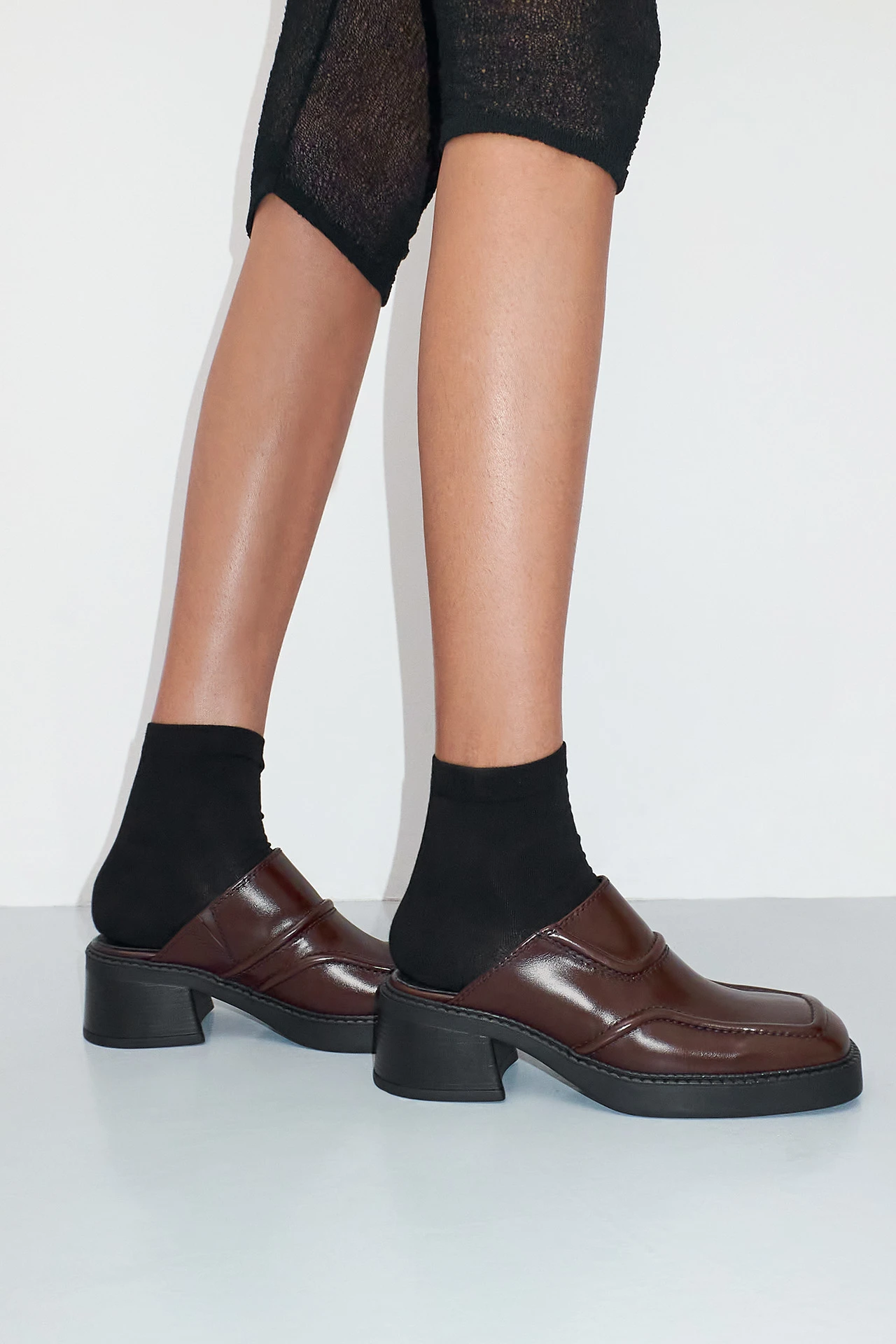
MIISTA Mules are my absolute favorite: they are comfy to wear, stylish, and transform into the perfect sandals come summer. Style them with colorful or wool socks for an extra textural effect.
Material: Upper Material: Cow Leather. Lining Material: 50% Leather, 50% Vegan Leather. Rubber Outsole
Price: $275.00
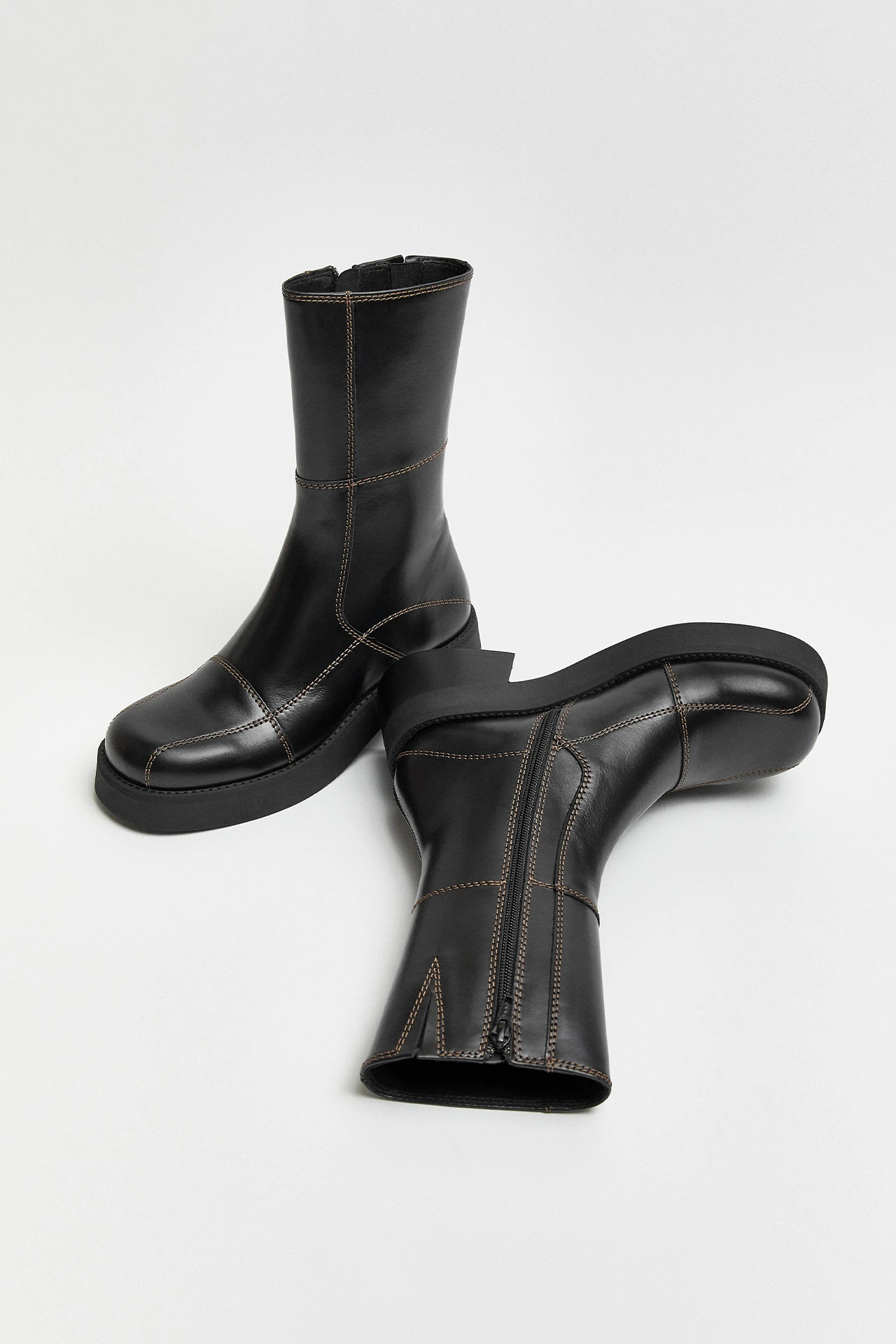
I have just parted ways with my MIISTA Ankle Boots after three years of adventures in every possible weather condition, and I can't stress enough how they make the ideal alley for any of your days. Wear them with a sophisticated fit and they'll add a grungy look to your style, couple them with a stripped-back look and they'll make it design-elevated, but most importantly, they'll take you wherever you go — on foot, by bike, in the baking sun and under heavy rain.
Material: Upper Material: Cow Leather. Lining Material: Vegan Leather. Rubber Outsole
Price: $320.00
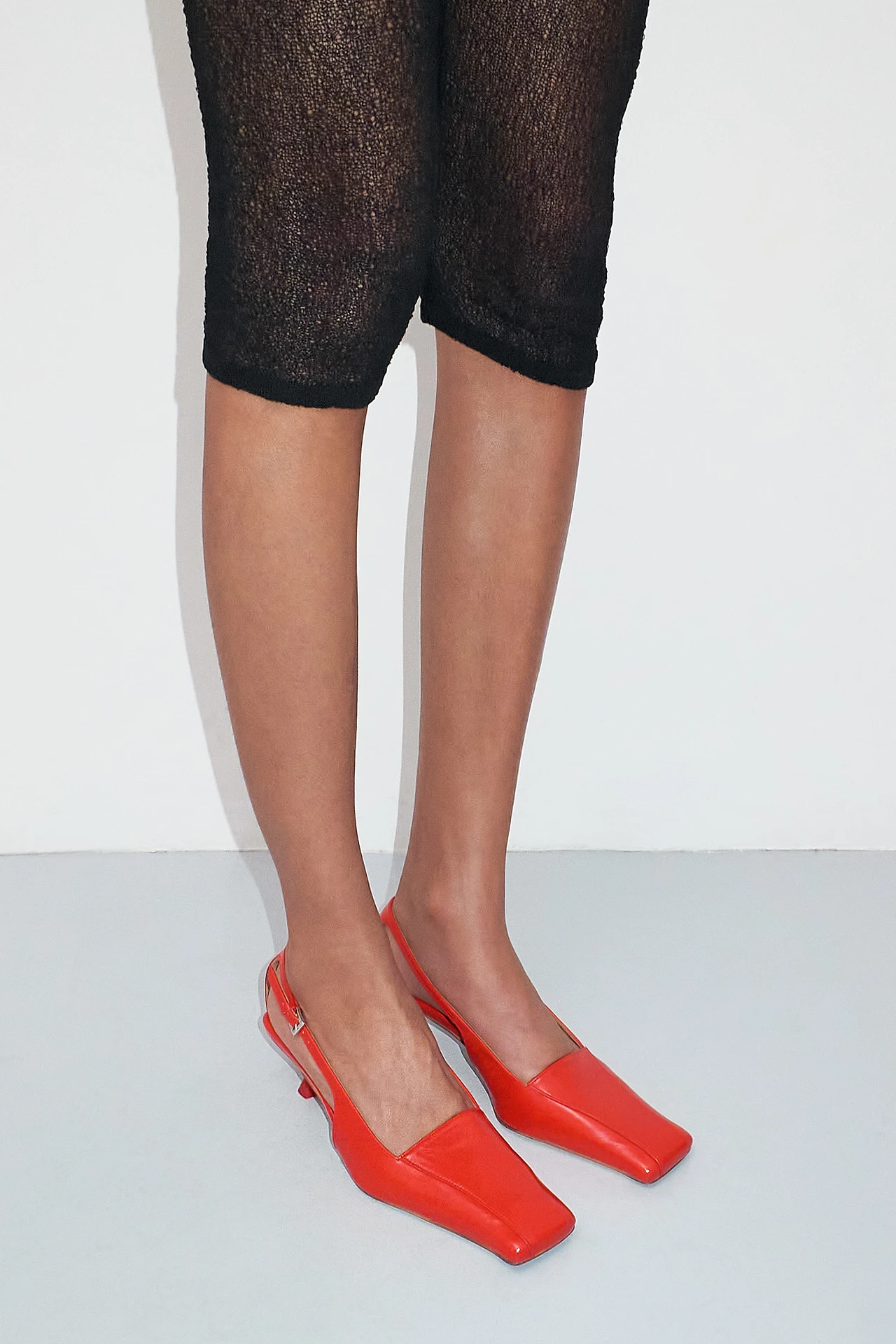
What I love about MIISTA is the boldness of its footwear designs: they are quirky, unexpected, and strikingly beautiful, and will make each of your outfits stand out from the crowd. As for these Adal Red Courts, the picture speaks for itself — pair them with an elegant, oversized monochromatic suit to bring a touch of brightness into the game, or with a casual chic, jeans-and-shirt kind of outfit for an everyday cosmopolitan look.
Material: Upper Material: Cow Leather. Lining Material: Cow Leather. Leather Outsole
Price: $390.00
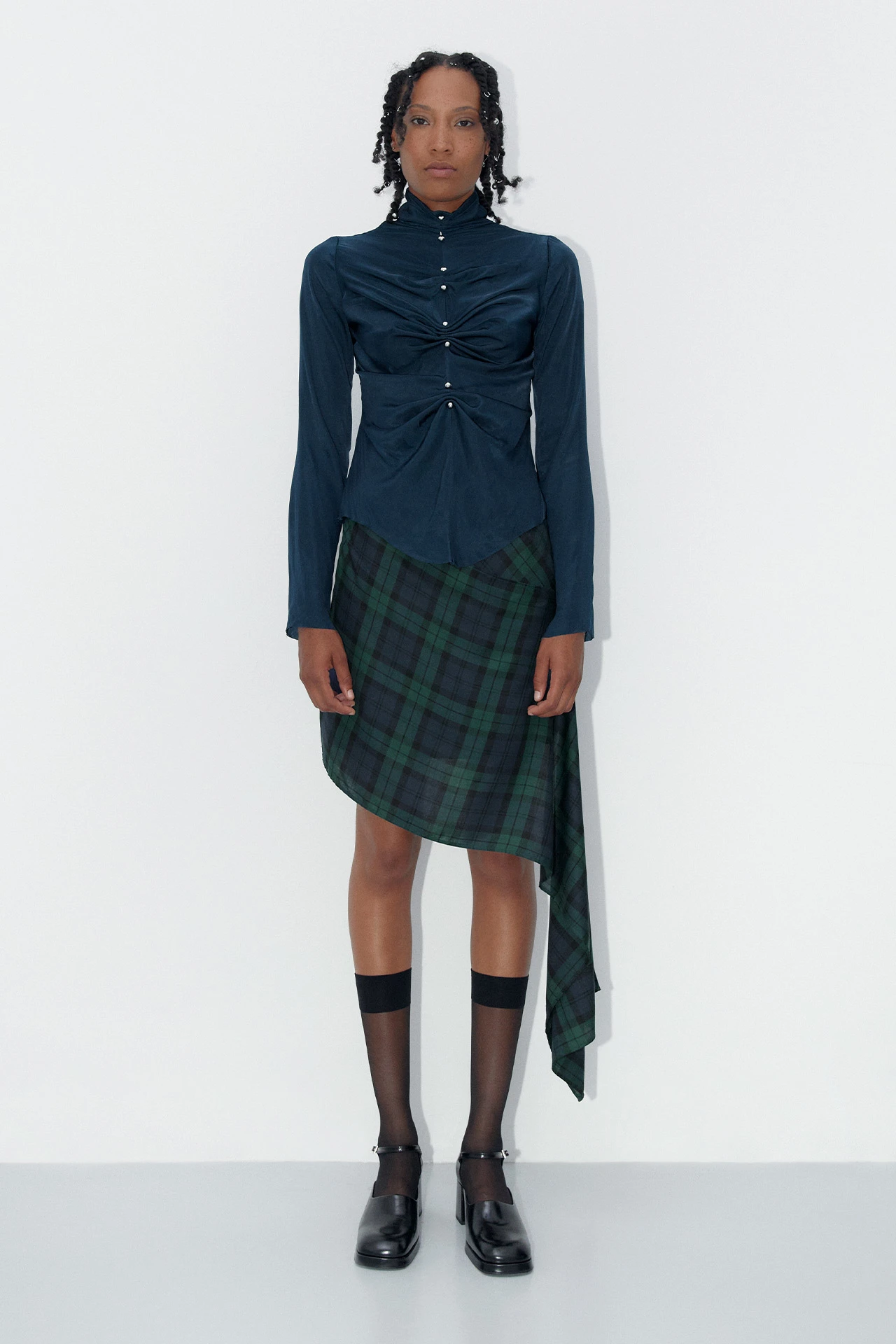
Sometimes you don't want to go over the top with smart clothing but want to look refined enough to head to exhibition openings and birthday parties, work social outings, and special occasions without feeling underdressed. This Lapis Midnight Blue Piercing Top will give your outfit the sparkle necessary to feel glamorous without having you sacrifice your comfort.
Material: 100% Polyester
Price: $505.00
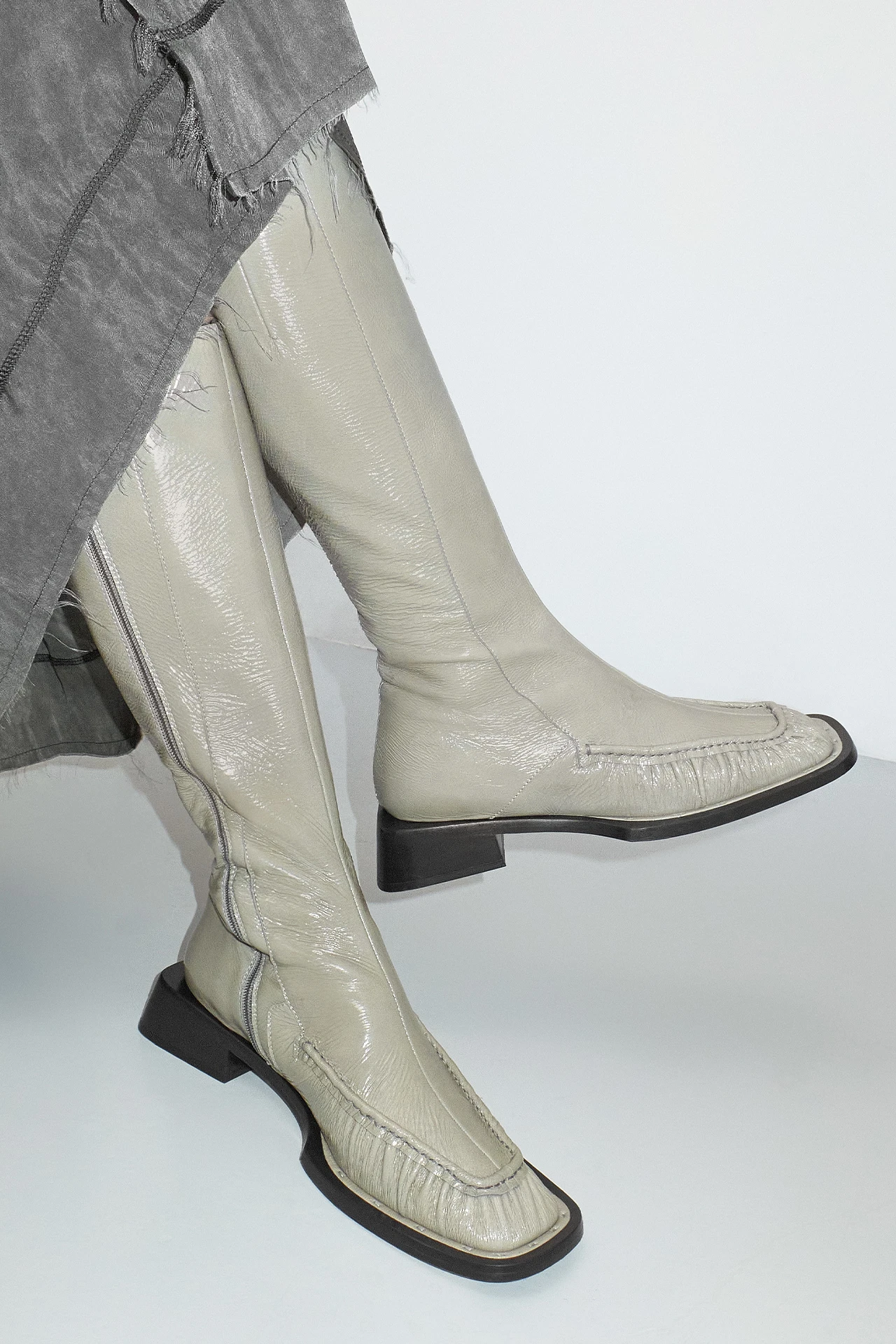
The thing about MIISTA boots is that no matter what you style them with, they'll always look on point, which makes them hard to take off once you've got them. These Pats Grey Boots, for example, are a stylish and reinvented rendition of traditional Western cowboy boots. With their geometrical low-heel platform and shiny upper leather panels, these won't go unseen.
Material: Upper Material: Sheep Patent Leather. Lining Material: Cow Leather. Leather Outsole
Price: $595.00
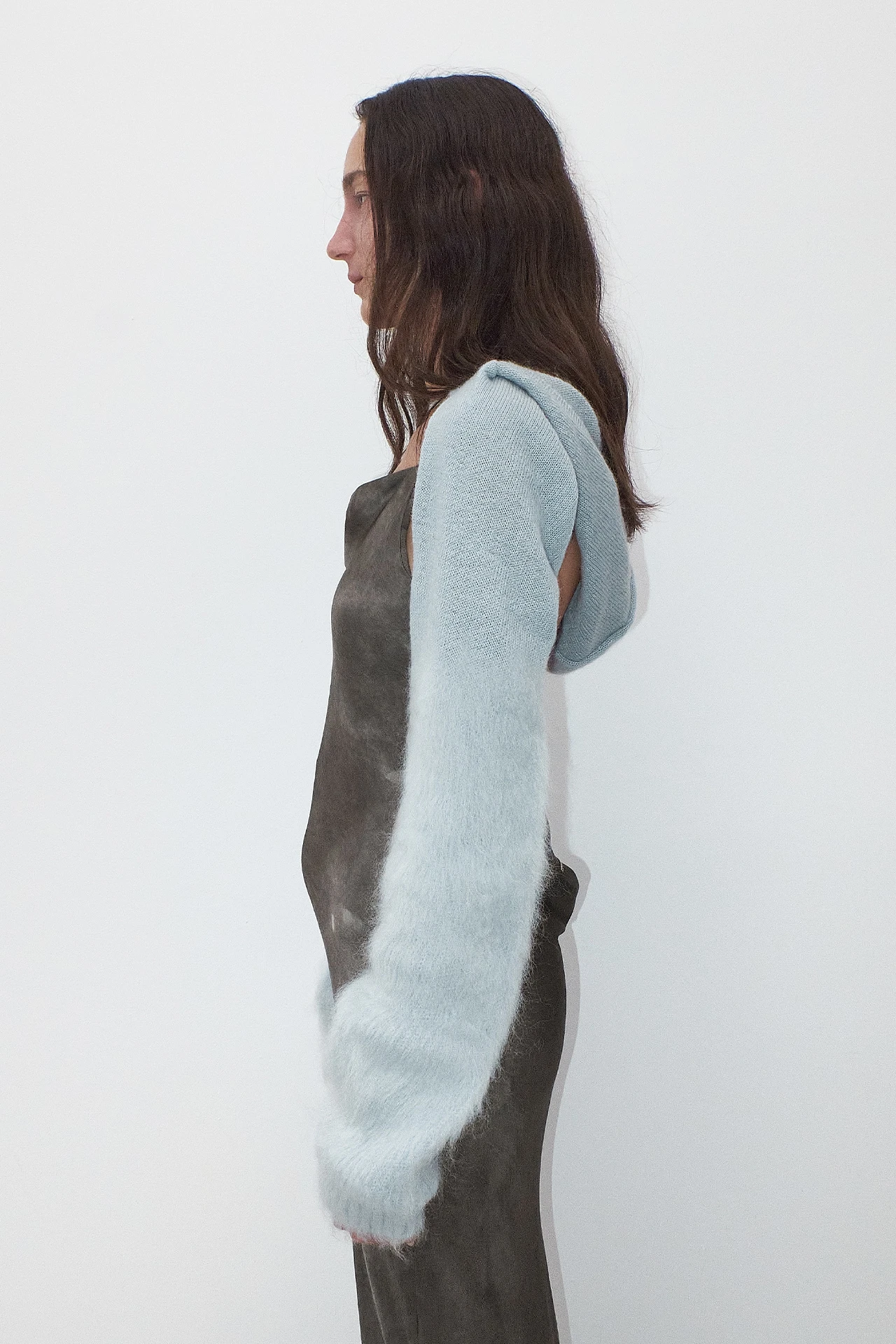
As the colder season approaches, these Nivi Hodded Blue Grey Sleeves will keep you warm without feeling overly bulky. Made of a mix of mohair and wool, it is the perfect addition to your nightouts' wardrobe, and can easily be squeezed into any handbag once you're ready to get loose.
Material: 50% Mohair, 30% Nylon, 20% Wool
Price: $335.00







